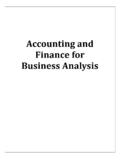Transcription of UNDERSTANDING AND MANAGING …
1 UNDERSTANDING AND MANAGING . ORGANIZATIONAL BEHAVIOR. Delta Publishing Company 1. Copyright 2006 by DELTA PUBLISHING COMPANY. Box 5332, Los Alamitos, CA 90721-5332. All rights reserved. No part of this book may be reproduced in any form or by any means, without permission in writing from the publisher. 2. TABLE OF CONTENTS. CHAPTER 1. An Introduction to Organizational Behavior CHAPTER 2. MANAGING People and Organizations CHAPTER 3. Motivation CHAPTER 4. Work-Related Attitudes CHAPTER 5. Organizational Communication and Power CHAPTER 6. Groups and Teams in Organizations CHAPTER 7. Leadership CHAPTER 8. Prosocial Behavior, Cooperation Conflict, and Stress CHAPTER 9. Making Decisions in Organizations CHAPTER 10. Culture, Creativity, and Innovation CHAPTER 11. Designing Effective Organizations CHAPTER 12. MANAGING Organizational Change and Development GLOSSARY. 3. CHAPTER 1. AN INTRODUCTION TO ORGANIZATIONAL BEHAVIOR. LEARNING OBJECTIVES. After reading this chapter you will be able to: Define organizational behavior.
2 Trace the historical roots of organizational behavior. Discuss the emergence of contemporary organizational behavior, including its precursors, the Hawthorne studies, and the human relations movement. Describe contemporary organizational behavior its characteristics, concepts, and importance. Identify and discuss contextual perspectives on organizational behavior. What is an organization? An organization is defined as a collection of people who work together to achieve a wide variety of goals. Organizational behavior is defined as the actions and attitudes of people in organizations. The field of organizational behavior (OB) covers the body of knowledge derived from these actions and attitudes. It can help managers understand the complexity within organizations, identify problems, determine the best ways to correct them, and establish whether the changes would make a significant difference. In this chapter, we begin with a comprehensive definition of organizational behavior and a framework for its study.
3 We then trace the field's historical roots and its emergence as an independent field. Next, we discuss contemporary organizational behavior and present an overview of the rest of this book. Finally, we examine several contextual perspectives that provide the general framework from which we can develop a more comprehensive examination of human behavior at work. The Meaning of Organizational Behavior Organizational behavior (OB) is the study of human behavior in organizational settings, how human behavior interacts with the organization, and the organization itself. Although we can focus on any one of these three areas independently, we must remember that all three are ultimately connected and necessary for a comprehensive UNDERSTANDING of organizational behavior. For example, we can study individual behavior (such as the behavior of a company's CEO or of one of its employees) without explicitly considering the organization. But because the organization influences and is influenced by the individual, we cannot fully understand the individual's behavior without knowing something about the organization.
4 Similarly, we can study an organization without focusing specifically on each individual within it. But again, we are looking at only one piece of the puzzle. Eventually, we must consider the other pieces to understand the whole. 1. Exhibit 1 illustrates this view of organizational behavior. It shows the linkages among human behavior in organizational settings, the individual-organization interface, the organization, and the environment surrounding the organization. Each individual brings to an organization a unique set of personal characteristics, experiences from other organizations, and personal background. Therefore, organizational behavior must look at the unique perspective that each individual brings to the work setting. For example, suppose that Texas Instruments hires a consultant to investigate employee turnover. As a starting point, the consultant might analyze the types of people the firm usually hires. The goal of this analysis would be to learn as much as possible about the nature of the company's workforce from the standpoint of the individual their expectations, their personal goals, and so forth.
5 EXHIBIT 1. THE NATURE OF ORGANIZATIONAL BEHAVIOR. Environmen t INDIVIDUAL. HUMAN BEHAVIOR THE INDIVIDUAL- IN ORGANIZATION. ORGANIZATIONAL INTERFACE. SETTINGS. THE ORGANIZATION. But individuals do not work in isolation. They come in contact with other people and with the organization in a variety of ways. Points of contact include managers, coworkers, the formal policies and procedures of the organization, and various changes implemented by the organization. Over time, the individual changes as a function of both personal experiences and maturity and of work experiences with the organization. The organization, in turn, is affected by the presence and eventual absence of the individual. Clearly, then, the study of organizational behavior must consider the ways in which the individual and the organization interact. Thus, the consultant studying turnover at Texas Instruments might choose to look at the orientation procedures for newcomers to the organization.
6 The goal of this phase of the study would be to understand some of the dynamics of how incoming individuals interact within the broader organizational context. An organization, of course, exists before a particular person joins it and continues to exist long after he or she has left. Therefore, the organization itself represents a crucial perspective from which to view organizational behavior. For instance, the consultant studying turnover would also need to study the structure and culture of Texas Instruments. An UNDERSTANDING of factors such as the performance evaluation and reward systems, the decision-making and 2. communication patterns, and the design of the firm itself can provide additional insight into why some people decide to stay while others elect to leave. Clearly, the field of organizational behavior can be both exciting and complex. Myriad variables and concepts impact the interactions described, and together these factors can greatly complicate a manager's ability to understand, appreciate, and manage others in an organization.
7 However, they can also provide unique opportunities to enhance personal and organizational effectiveness. The key, of course, is UNDERSTANDING . To provide some groundwork for UNDERSTANDING , we look first at the historical roots of organizational behavior. Historical Roots of Organizational Behavior Many disciplines, such as physics and chemistry, are literally thousands of years old. Management has also been around in one form or another for centuries. For example, the writings of Aristotle and Plato abound as references and examples of management concepts and practices. But because serious interest in the study of management did not emerge until the turn of the twentieth century, organizational behavior is only a few decades old. One reason for the relatively late development of management as a scientific field is that very few large business organizations existed until around a hundred years ago. Although management is just as important to a small organization as it is to a large one, large firms provided both a stimulus and a laboratory for management research.
8 Second, many of the initial players interested in studying organizations were economists. Economists initially assumed that management practices are by nature efficient and effective; therefore, they concentrated on higher levels of analysis such as national economic policy and industrial structures rather than on the internal structure of companies. Scientific Management One of the first approaches to the study of management, popularized during the early 1900s, was scientific management. Individuals who helped develop and promote scientific management included Frank and Lillian Gilbreth (whose lives are portrayed in a book and a subsequent movie, Cheaper by the Dozen), Henry Gantt, and Harrington Emerson. But the person commonly associated with scientific management is Fredric W. Taylor. Early in his life, Taylor developed an interest in efficiency and productivity. While working as a foreman at Midvale Steel Company in Philadelphia from 1878 to 1890, he noticed a phenomenon, which he named soldiering employees' working at a pace much slower than their capabilities.
9 Because managers had never systematically studied jobs in the plant and, in fact, had very little idea on how to gauge worker productivity, they were completely unaware of this phenomenon. To counteract the effects of soldiering, Taylor developed several innovative techniques. First, he scientifically studied all the jobs at the Midvale plant and developed a standardized method for performing each one. He also installed a piece-rate pay system in which each worker was paid for the amount of work he completed during the workday rather than for the time spent on the job. (Taylor believed that money was the only significant motivational factor in the 3. workplace.) These two innovations resulted in a marked increase in productivity and serve as the foundation of scientific management as we know it. After leaving Midvale, Taylor spent several years working as a management consultant for industrial firms. At Behlehem Steel Company, he developed several efficient techniques for loading and unloading rail cars.
10 At Simonds Rolling Machine Company, he redesigned jobs, introduced rest breaks to combat fatigue, and implemented a piece-rate pay system. In every case, Taylor claimed his ideas and methods greatly improved worker output. His book, Principles of Scientific Management, published in 1911, was greeted with enthusiasm by practicing managers and quickly became a standard reference. Scientific management quickly became a mainstay of business practice. It facilitated job specialization and mass production, consequently influencing the business system in profound ways. Taylor had his critics, though. Laborers opposed scientific management because of its explicit goal of getting more output from workers. Congress investigated Taylor's methods and ideas because some argued that his incentive system would dehumanize the workplace and reduce workers to little more than drones. Later theorists recognized that Taylor's views on employee motivation were inadequate and narrow.














